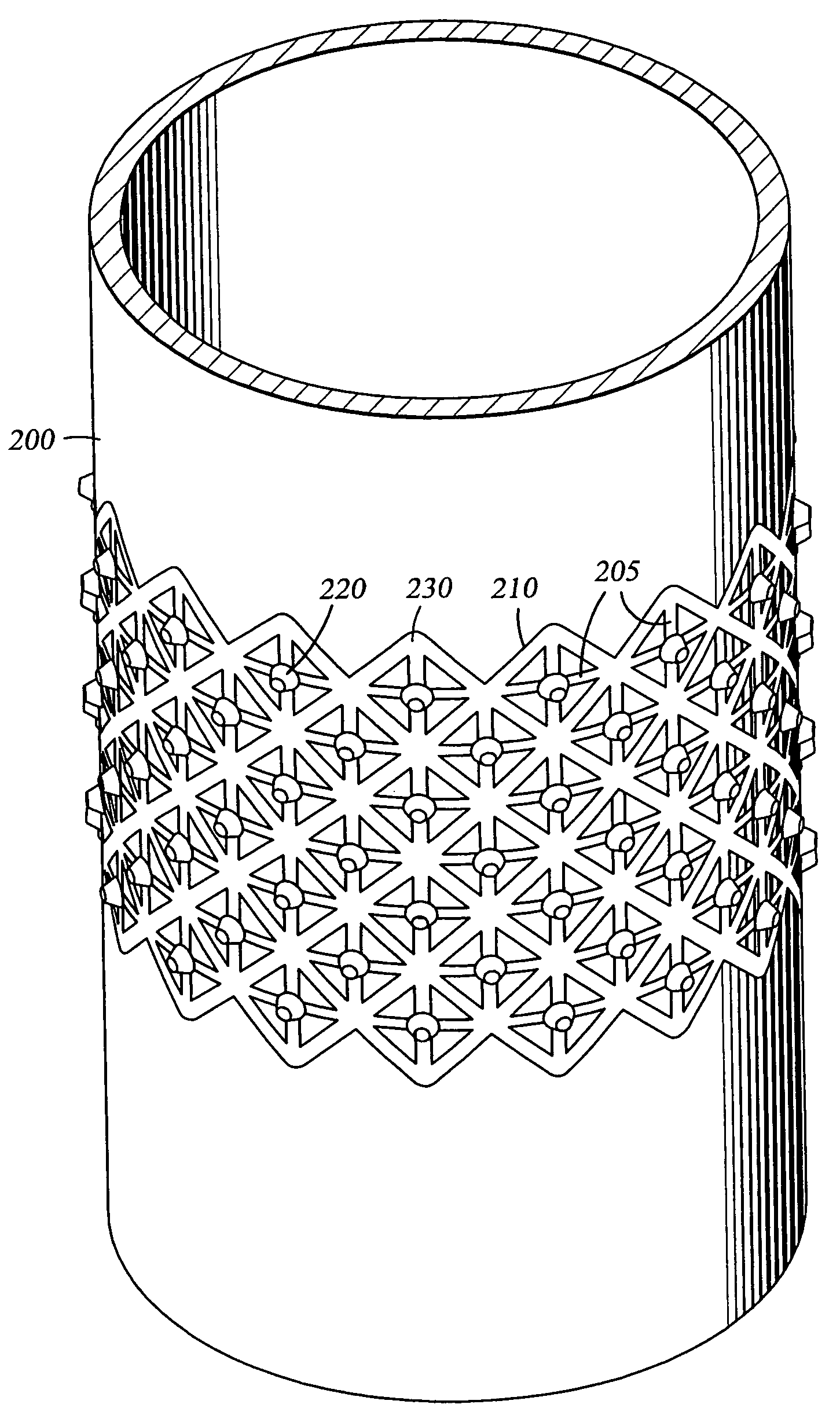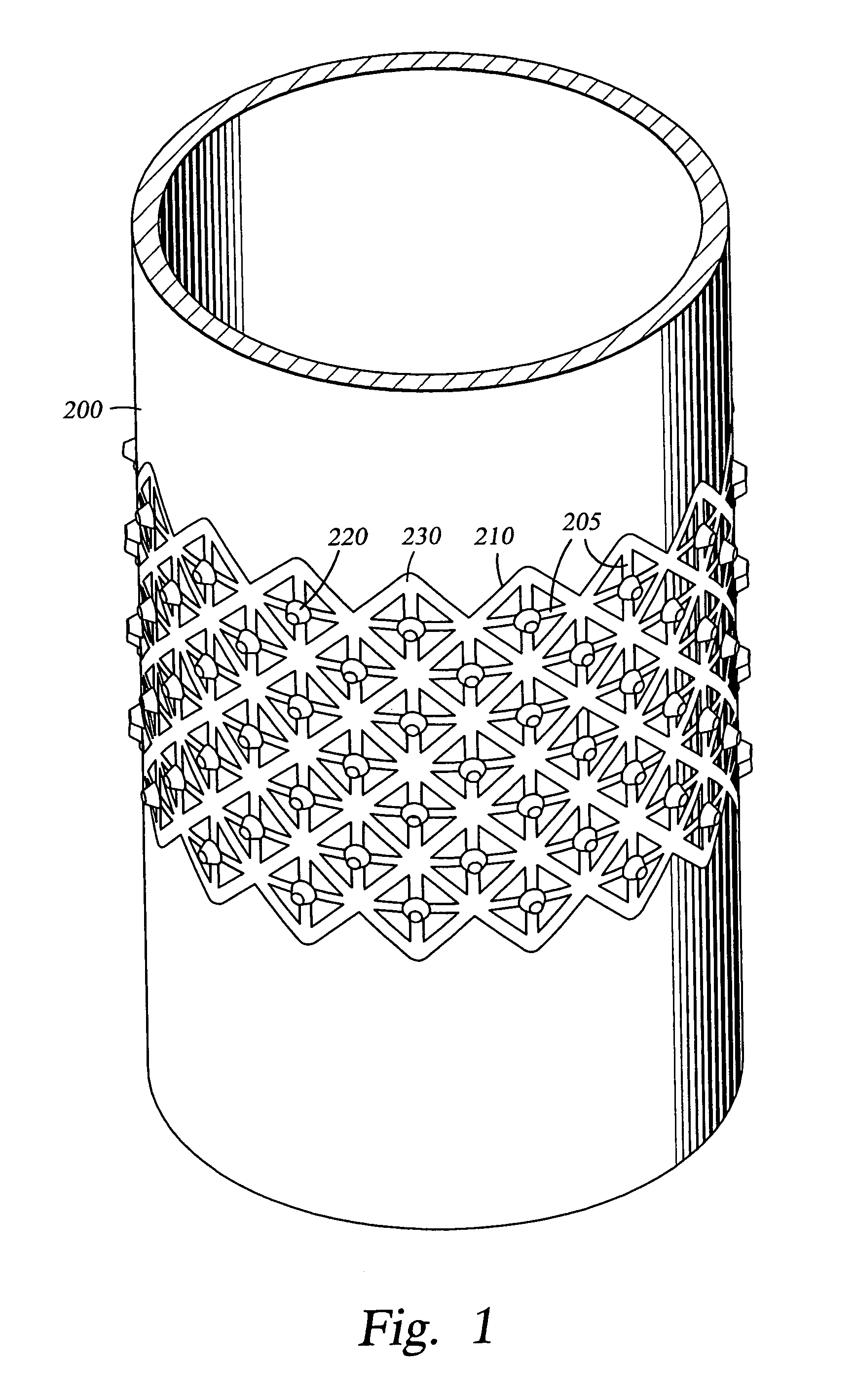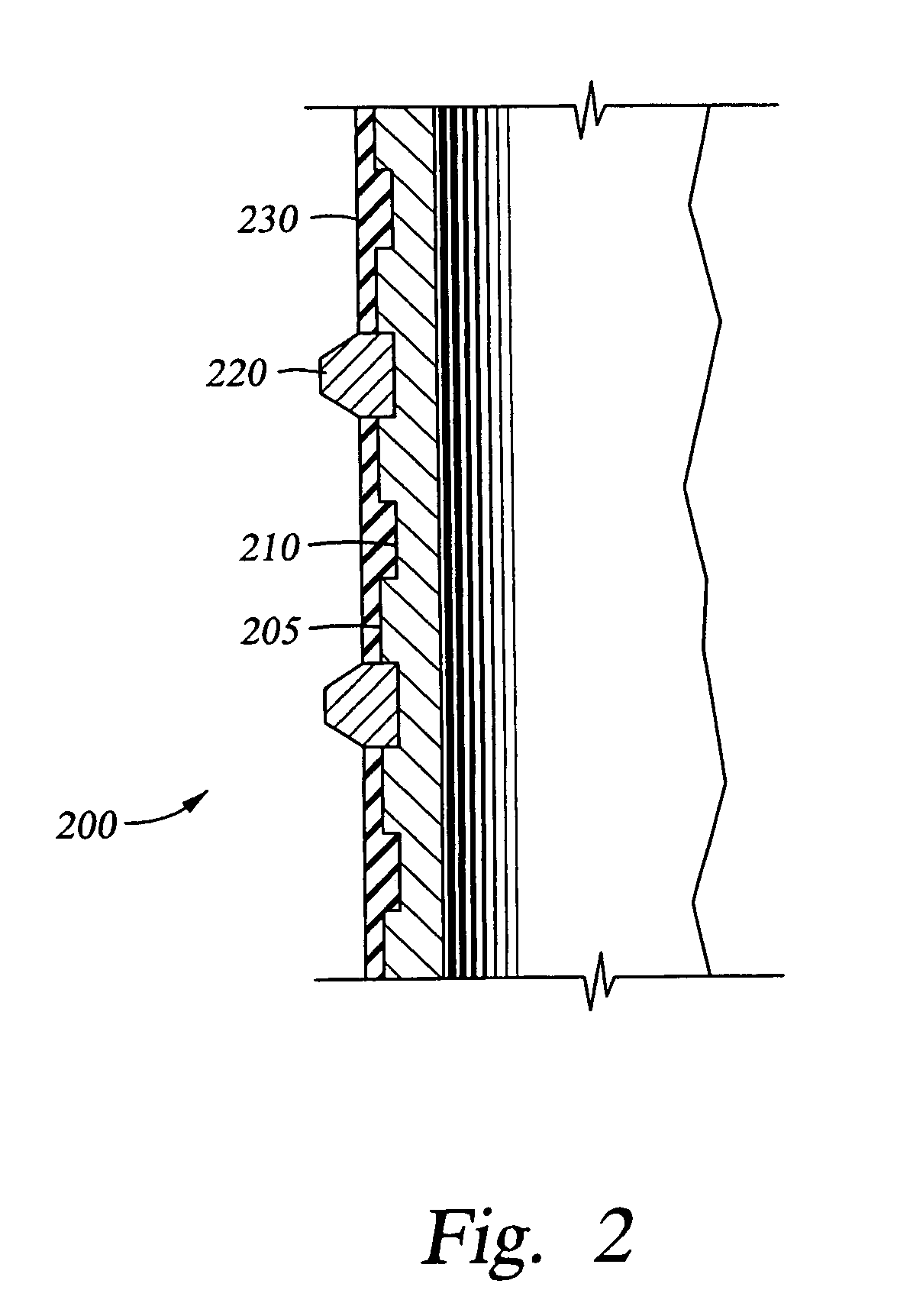Expandable hanger and packer
a technology of expandable tubular and expandable tubular, which is applied in the direction of hose connection, borehole/well accessories, mechanical equipment, etc., can solve the problems of occupying valuable annular space in the wellbore, relative movement of the necessary parts, and the body of the packer necessarily requires the wellbore space, so as to reduce the amount of radial force, increase the and increase the sealing capacity of the expandable tubular
- Summary
- Abstract
- Description
- Claims
- Application Information
AI Technical Summary
Benefits of technology
Problems solved by technology
Method used
Image
Examples
Embodiment Construction
[0025]FIG. 1 is a perspective view of the apparatus of the present invention. The apparatus 200 defines a tubular body formed on a portion of a larger tubular. The tubular body 200 shown in FIG. 1 includes a series of relief grooves 210 and profile cuts 205 machined into the outer surface. However, it is within the scope of the present invention to machine some or all of the grooves 210 into the inner surface of the expandable tubular 200. The relief grooves 210 and profile cuts 205 serve to reduce the thickness of the tubular 200, thereby reducing the amount of material that must be plastically deformed in order to expand the tubular 200. This reduction in material also results in a reduction in the amount of force needed to expand the tubular 200.
[0026]As shown in FIG. 1, the grooves 210 are machined in a defined pattern. Employment of a pattern of grooves 210 serves to increase the tensile properties of the tubular 200 beyond those of a tubular with straight grooves simply cut ar...
PUM
| Property | Measurement | Unit |
|---|---|---|
| circumference | aaaaa | aaaaa |
| inner diameter | aaaaa | aaaaa |
| outer diameter | aaaaa | aaaaa |
Abstract
Description
Claims
Application Information
 Login to View More
Login to View More - R&D
- Intellectual Property
- Life Sciences
- Materials
- Tech Scout
- Unparalleled Data Quality
- Higher Quality Content
- 60% Fewer Hallucinations
Browse by: Latest US Patents, China's latest patents, Technical Efficacy Thesaurus, Application Domain, Technology Topic, Popular Technical Reports.
© 2025 PatSnap. All rights reserved.Legal|Privacy policy|Modern Slavery Act Transparency Statement|Sitemap|About US| Contact US: help@patsnap.com



